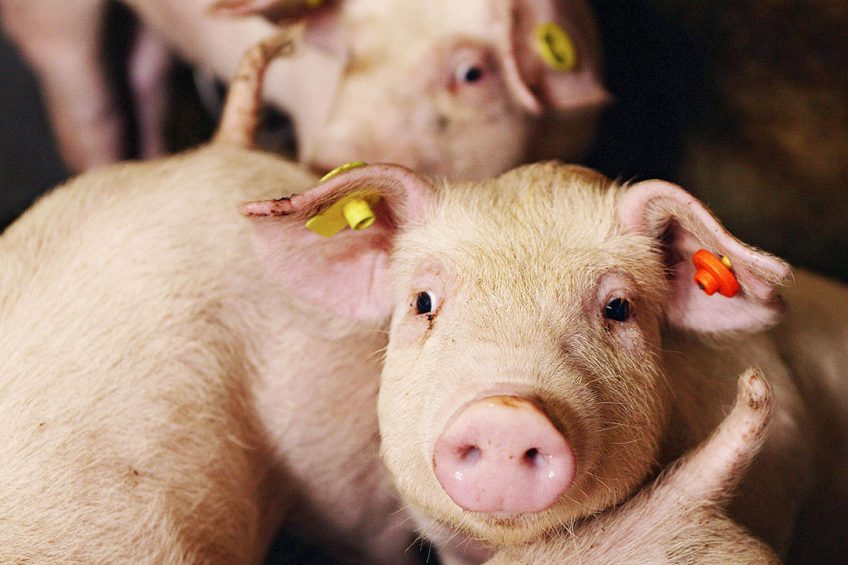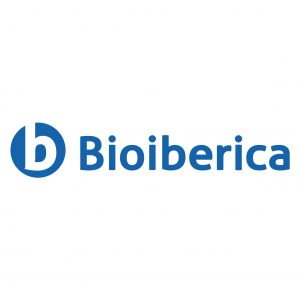Benefits of using hydrolysed porcine intestinal mucosa

Hydrolysed porcine intestinal mucosa proteins have been used in animal nutrition for many years. Various research has suggested that, in addition to their nutritional value, hydrolysed intestinal mucosal peptides have a series of beneficial functional properties that contribute to the maintenance of animal health.
Nutrition for young animals is continuously evolving towards more accurate strategies, top quality ingredients, detailed formulations, and maximum efficacy. It is clear that the first few days and weeks of life are decisive for the development of these animals.
In the future, nutritional products are expected to be completely free of antibiotics and zinc oxide, therefore it is not only important that the ingredients are of high quality, but it is becoming increasingly more important that they are functional. This means that these same ingredients also provide value in addition to being nutritional and have a positive impact on the health (gut and overall health) of these young animals.
These positive effects are significant contributors to maintaining intestinal health and ensuring a good start in life without the use of drugs. Much research is still required in this field for a deeper understanding of how these ingredients work, what their function is, and what we can expect from them
Positive effects of hydrolysed porcine intestinal mucosa
In December 2020, González-Solé et al. published a scientific study on the effects of a functional protein source based on hydrolysed peptides from porcine intestinal mucosa. This article*, published in the scientific journal Animals, shows the results of 2 experiments in which this product (pure hydrolysed porcine intestinal mucosa with 62% protein) is used as a partial replacement for soybean meal in piglet diets with high inclusion of this raw ingredient.
In the first experiment, it was shown that the inclusion of hydrolysed porcine mucosa (2%) had positive effects on the production parameters of piglets (weight, average daily gain, FCR) during the first 2 weeks post-weaning compared to the control group (high soy content diets). These results were statistically comparable to the other test group with a 2% inclusion of porcine plasma (Table 1).
In the 2nd experiment, the synergistic effect of hydrolysed porcine intestinal mucosa and porcine plasma was studied (Table 2). In newly weaned piglets (0-14 days post weaning), diets with high soybean meal inclusion were used as a control group, other diets were also tested; one where the soybean meal was partially replaced by porcine plasma (3%) for one of the groups, and by a combination of porcine plasma (1%) and hydrolysed porcine intestinal mucosa (2%) for another. Both the plasma group, and the combination of plasma and hydrolysed mucosa group presented significant improvements in the production parameters after 14 days, specifically in weight, daily gain, and feed conversion (Table 3).
Nutrigenomic analysis of gene expression
In the 2nd part of the 2nd experiment, a nutrigenomic analysis of gene expression in the intestine of the animals was carried out. Surprisingly, in the group incorporating hydrolysed porcine intestinal mucosa, there were a number of genes that were expressed significantly more compared to the control group and the group incorporating only porcine plasma. These genes were related to various functions, including digestive, intestinal, and immunological functions.
Positively modify the gene expression
Hydrolysed porcine intestinal mucosa proteins have been used in animal nutrition for over 20 years. Their valuable nutritional properties are well known: their amino acid profile, digestibility, and palatability have positioned them as a very high-quality alternative for early-stage feeds, and as a sustainable and safe replacement for traditional proteins such as soy, fishmeal, and plasma.
In recent years, various scientific investigations have suggested that, in addition to their nutritional value, hydrolysed intestinal mucosal peptides have a series of functional properties that contribute to the maintenance of animal health, beyond purely production parameters.
The study published by González-Solé et al. is precisely an example of the functional characteristics of this family of proteins. The results of the study indicated that in addition to improving the production parameters compared to a protein such as soy, they also showed that peptides and protein fragments from hydrolysed porcine intestinal mucosa have the ability to influence and interact with intestinal cells and positively modify the expression of certain genes.
The genes with increased expression, are genes mainly related to intestinal health and the digestive system. For example, genes such as TFF3 are involved in epithelial repair and maintenance of intestinal mucosa, while CLDN15 is involved in normal intestinal formation. Other positively expressed genes, such as TLR4, IFNGR1 and GBP1, perform functions that are more concerned with protection and defence. The first is a microbial antigen receptor and its overexpression is related to increased protection against pathogens in the intestine. The second codes for an immune system mediator protein, suggesting greater activation and speed of the body’s defences. The third one has a role in inhibiting cell death in the intestinal epithelium, which normally occurs in cases of intestinal inflammation. Its overexpression indicates an increased resistance to damage caused by inflammatory processes in the intestine. Nutrient transport-related genes (SLC11A2/DMT1) have also been positively expressed. Finally, 2 genes coding 2 enzymes also showed increased expression. The HNMT gene, codes a histamine metabolising enzyme. Histamine is a biogenic amine, a product of intestinal bacterial fermentation of undigested proteins. Histamine becomes toxic above certain concentrations and can cause inflammatory processes. The overexpression of this enzyme will help better metabolise this biogenic amine, thus reducing its harmful effects. The APN gene, is involved in the final digestion of peptides which is considered beneficial to intestinal health. On the other hand, the SOD2 gene, which codes the enzyme superoxide dismutase 2, also saw its expression increased. This gene is responsible for the elimination of ROS (reactive oxygen substances), highly oxidative molecules that damage cells and biological processes.
Beneficial effects on the intestine
But how could a protein source, such as hydrolysed porcine intestinal mucosa, have a direct impact on intestinal cell gene expression? Undoubtedly, it is more about its functional powers and its bioactive capacity than its nutritional qualities. There are several reasons why these proteins may have this bioactive power:
- Origin: porcine intestinal mucosa is a natural animal source. It is used in the pharmaceutical industry for the manufacture of the drug heparin. Hydrolysed proteins are a coproduct of this pharmaceutical process. If we analyse the intestinal mucosa in detail, we will see that it is digestive and glandular tissue: it is involved in many nutrient absorption, digestion, and nutritional processes, but it is also considered an important element of the immune system and the first barrier of defence in animals. Therefore, it is a tissue with very high biological activity and with many proteins and components that perform beneficial functions for organisms.
- Enzymatic hydrolysis: The enzymatic hydrolysis process is the key to extracting and purifying the drug heparin from porcine intestinal mucosa. Specific enzymes are used to break down the protein mesh of the mucosa in an intelligent way. Hydrolysed mucosal proteins are obtained as a co-product. It is well known that the enzymatic hydrolysis process on natural tissue generates free amino acids and small low molecular weight peptides. Enzymatic hydrolysis not only provides nutritional properties (high digestibility, high palatability, and higher efficiency of the protein) and complete biosafety (low molecular weight of the resulting protein fragments and viral inactivation), it seems that it is also responsible for the bioactivity of the peptides. Several publications have described how peptides generated from enzymatic hydrolysis processes can have bioactivity and create specific effects in organisms.
When a natural tissue with the characteristics of porcine intestinal mucosa is subjected to a process of enzymatic hydrolysis, the result is a source of low molecular weight hydrolysed proteins, containing specific peptides and free amino acids generated by this hydrolysis. It is precisely these peptides, from intestinal mucosa proteins, with various functionalities, and hydrolysed with enzymes that respect their best-preserved structures, that maintain their biological activities or acquire new functionalities, that are beneficial for intestinal cells. Considering the tissue’s origin, it can be deduced that these effects will be particularly beneficial to the intestine. In this way, it can be explained that the use of these peptides has caused a positive effect on the expression of certain genes that provide benefits to intestinal function and improve defences.
In fact, some recent publications have already demonstrated in vitro the power of some of these peptides to promote the development of intestinal cells in a specific way, compared to cell cultures of other tissues where the effects were not so marked. Similarly, past field trials have shown how the use of hydrolysed porcine intestinal mucosa in young animals can contribute to proper intestinal and intestinal villus development, attenuate episodes of diarrhoea and even mitigate intestinal inflammation.
One of the key factors for the success of precision diets in young animals is the incorporation of functional ingredients, which provide added and specific value. These functionalities, together with the intrinsic nutritional properties of such diets, will be necessary to pursue the efficiency and sustainability of animal protein production systems in the coming years.
*This article is based on the publication of González-Solé F, et al. Porcine Digestible Peptides (PDP) in Weanling Diets Regulates the Expression of Genes Involved in Gut Barrier Function, Immune Response and Nutrient Transport in Nursery Pigs. Animals 2020, 10, 2368; doi:10.3390/ani10122368
The tables have been adapted from the original publication.


